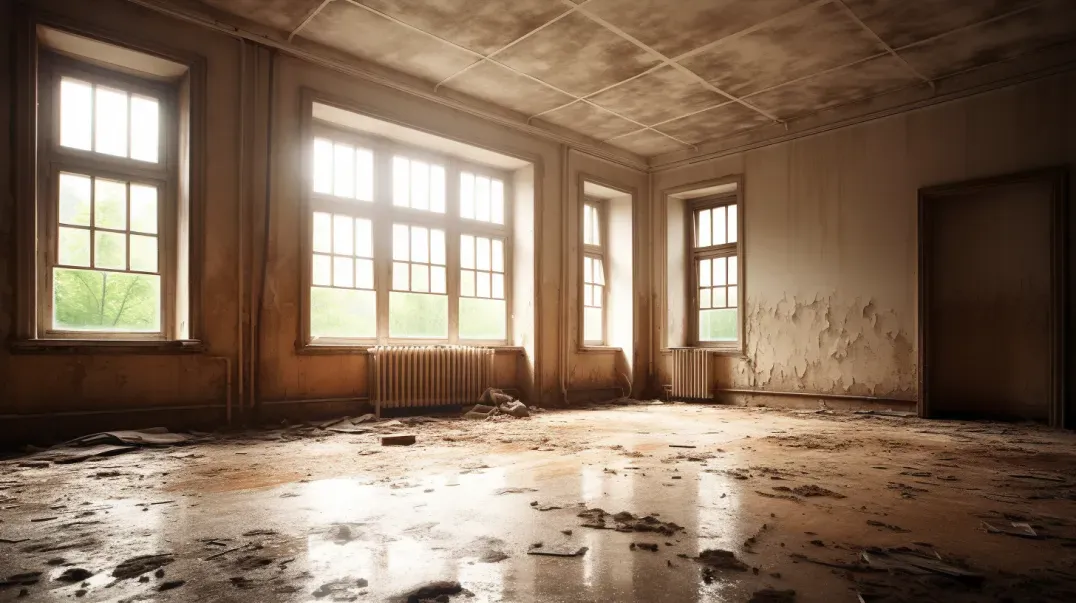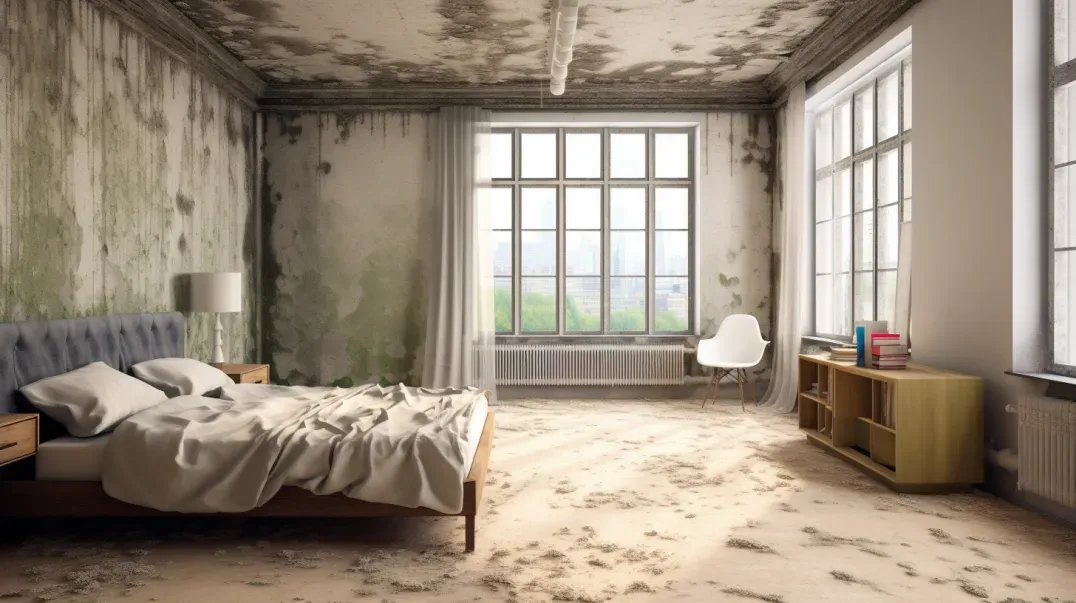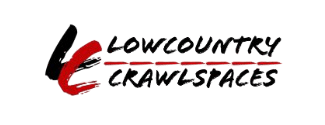Professional Mold Prevention: When to Call the Experts
Mold: a common yet potentially harmful presence in homes and buildings, poses significant health risks and structural damage if not addressed promptly and effectively. While mold spores are a natural part of the environment, their unchecked growth indoors can lead to a myriad of problems, ranging from minor allergies to serious respiratory conditions, as well as compromising the integrity of building materials. Recognizing the critical nature of this issue, our blog delves into the essential knowledge homeowners and property managers must possess regarding mold prevention, the pivotal moments when intervention is necessary, and the undeniable value of enlisting expert services for mold prevention and remediation.
In an era where the safety and well-being of occupants are paramount, understanding the intricacies of mold growth and prevention is not just advisable—it's imperative. This blog aims to shed light on the specific conditions that foster mold proliferation, the signs that indicate a growing problem, and the long-term consequences of neglecting mold issues. More importantly, we underscore the scenarios in which professional mold prevention services become not just beneficial but necessary to ensure a healthy, safe, and mold-free environment.
Expert mold prevention services offer more than just remediation; they provide peace of mind through comprehensive assessments, tailored solutions, and preventative strategies grounded in scientific knowledge and practical experience. By embracing the expertise of professionals, property owners can safeguard their health, their investments, and their future against the unseen threat of mold.
Join us as we explore the critical moments that demand expert intervention and the undeniable benefits of prioritizing professional mold prevention services. Whether you're a homeowner, a property manager, or simply someone interested in maintaining a healthy living environment, this blog will equip you with the essential insights and guidance to proactively address mold challenges with confidence and efficacy.
Understanding the Risks of Mold in Homes
Mold growth in homes is not just an aesthetic issue; it poses significant risks to both health and structural integrity. Understanding these risks is crucial for homeowners to take timely action and prevent potential damage. This section delves into the health hazards associated with mold exposure and the structural damage mold can cause, emphasizing the importance of addressing mold issues promptly.
The Health Hazards of Mold
Mold in homes can lead to a variety of health problems, ranging from mild allergic reactions to severe respiratory issues. Exposure to mold spores can cause symptoms such as sneezing, coughing, watery eyes, and skin irritation in sensitive individuals. More severe reactions may include asthma attacks in people with asthma and serious lung infections in people with weakened immune systems.
The presence of mold can particularly affect children, the elderly, and those with pre-existing respiratory conditions, making it imperative to maintain a mold-free environment. This overview aims to shed light on the potential health risks mold poses and underscores the importance of professional mold prevention services to safeguard occupants' health.
Structural Damage Caused by Mold
Beyond health concerns, mold can significantly compromise the structural integrity of buildings. Mold thrives in damp conditions and can infiltrate wood, drywall, carpeting, and other building materials, leading to decay and damage over time. The persistent presence of mold can weaken the structural components of a home, causing costly damage and potentially hazardous living conditions.
This section explores how mold affects various building materials and the long-term consequences of unchecked mold growth. By understanding the structural risks posed by mold, homeowners can appreciate the critical role of expert mold prevention and remediation services in maintaining their property's safety and value.
Limitations of DIY Mold Prevention
While DIY mold prevention and removal can be effective for minor issues, there are significant limitations to what home remedies and do-it-yourself solutions can achieve. Understanding these limitations is crucial for homeowners to prevent inadequate mold treatment, which can lead to more severe health risks and structural damage over time. This section discusses why DIY mold prevention might not always be sufficient and how to recognize the signs of a severe mold infestation that requires professional intervention.
When DIY Isn’t Enough
DIY mold prevention and removal methods, such as using vinegar or bleach on affected areas, can sometimes address small patches of mold. However, these solutions often fail to get to the root of the problem—excess moisture and water intrusion. Without addressing the underlying cause, mold is likely to return, potentially leading to repeated health risks and damage to your home.
Moreover, DIY methods lack the thoroughness and effectiveness of professional mold remediation services, which use advanced techniques and equipment to ensure mold is completely removed. This section highlights the limitations of home remedies and DIY solutions in effectively dealing with mold issues, emphasizing the importance of professional assessment and remediation in certain situations.
Recognizing the Signs of Severe Mold Infestation
Identifying when a mold problem is beyond the scope of DIY solutions is critical to preventing extensive damage and health hazards. Signs of a severe mold infestation include:
- Widespread Mold Growth: Visible mold covering large areas or multiple spots throughout the home.
- Persistent Musty Odors: A strong, musty smell that persists despite cleaning efforts.
- Health Symptoms: Experiencing or worsening of health issues, such as respiratory problems, allergies, or headaches, especially among household members.
- Water Damage: Signs of water damage, such as stains, discolorations, or peeling paint, which can indicate hidden mold growth behind walls or under floors.
This section aims to educate homeowners on recognizing these critical signs that indicate a mold issue is beyond DIY capabilities. It underscores the necessity of seeking professional mold remediation services to ensure the health and safety of home environments and the integrity of the property.
The Role of Professional Mold Prevention Services
Professional mold prevention services play a crucial role in maintaining healthy indoor environments and safeguarding the structural integrity of properties. These services go beyond simple cleaning or DIY methods by offering comprehensive solutions designed to address both the symptoms and the root causes of mold growth. This section provides an overview of what professional mold prevention services offer and highlights the specialized techniques and equipment they use to protect homes and buildings from the adverse effects of mold.
What Do Professional Mold Prevention Services Offer?
Professional mold prevention and remediation services offer a multifaceted approach to tackling mold issues. These services typically include:
- Thorough Inspection and Assessment: Experts conduct detailed inspections to identify the extent of mold growth and the underlying moisture sources contributing to the problem.
- Customized Mold Remediation Plan: Based on the assessment, professionals develop a tailored plan to address the specific mold issue, considering the property's unique circumstances.
- Moisture Control Solutions: Recognizing that moisture control is key to preventing mold, professionals implement strategies to manage humidity levels and fix leaks or other water intrusion sources.
- Mold Removal and Cleanup: Using advanced techniques, professionals safely remove mold from affected areas, ensuring that spores are contained and do not spread during the process.
- Preventive Measures and Recommendations: After remediation, professionals provide guidance on preventing future mold growth, including ventilation improvements, humidity control, and regular inspection routines.
Advanced Techniques and Equipment
Professional mold prevention services utilize specialized techniques and state-of-the-art equipment to effectively address mold issues, including:
- HEPA Filtration Systems: High-Efficiency Particulate Air (HEPA) filters are used to clean the air of mold spores and other particulates, ensuring a healthier indoor environment.
- Moisture Meters and Thermal Imaging: These tools help in detecting hidden moisture and mold growth within walls, floors, and ceilings, allowing for a more accurate assessment.
- Antimicrobial and Antifungal Treatments: Professionals apply these treatments to affected areas to kill existing mold and prevent future growth.
- Containment and Negative Air Pressure: These techniques are employed to prevent the spread of mold spores during the remediation process, protecting the rest of the property from contamination.
Scenarios Requiring Professional Intervention
Mold growth in homes and buildings can sometimes be managed with DIY solutions, but there are scenarios where professional intervention is crucial. Recognizing these situations can help prevent serious health risks and structural damage. This section outlines scenarios that necessitate professional mold assessment and remediation, including after water damage or flooding, persistent mold problems, and when health concerns or vulnerable occupants are involved.
After Water Damage or Flooding
Significant water incidents, such as flooding or substantial water damage, can create ideal conditions for mold growth. In these situations, it's essential to have a professional mold assessment as part of the recovery process. Professionals have the expertise to identify potential mold issues that may not be immediately visible and can develop a comprehensive plan to address both water damage and mold prevention. Early intervention by professionals can prevent mold from becoming a long-term problem, safeguarding both the property's integrity and the occupants' health.
Persistent Mold Problems
When mold issues recur despite repeated cleaning or DIY remediation efforts, it's a clear sign that the underlying cause of the mold growth has not been adequately addressed. Persistent mold problems often indicate more complex issues, such as hidden moisture sources, inadequate ventilation, or structural vulnerabilities. Professional mold remediation services are equipped to diagnose these underlying problems and implement effective, long-lasting solutions that go beyond surface-level treatment.
Health Concerns and Vulnerable Occupants
In homes with vulnerable residents, such as individuals with allergies, respiratory issues, or compromised immune systems, professional mold prevention becomes even more critical. Exposure to mold can exacerbate health problems for these individuals, making it imperative to maintain a mold-free environment. Professional services can ensure that mold is thoroughly removed and that measures are taken to prevent its return, creating a safer and healthier living space for all occupants.
The Process of Professional Mold Prevention
Professional mold prevention involves a systematic approach to identify potential mold issues, assess the extent of existing mold growth, and implement strategies to mitigate and prevent future mold problems. This process is crucial for maintaining a healthy indoor environment and protecting the structural integrity of properties. Understanding the steps involved can help homeowners appreciate the value of professional expertise in effectively managing mold risks.
Assessment and Inspection
The first step in professional mold prevention is a comprehensive assessment and inspection of the property. Here's what to expect during this phase:
- Visual Examination: Professionals conduct a thorough visual inspection of all areas of your home, including hard-to-reach spaces, to identify visible signs of mold growth.
- Moisture Assessment: Since mold growth is often related to excess moisture, experts use specialized tools, such as moisture meters and thermal imaging cameras, to detect areas of moisture intrusion that could foster mold growth.
- Sampling and Testing: In some cases, professionals may collect air and surface samples to test for mold spores, especially if the presence of mold is suspected but not visible. This step helps in identifying the types of mold present and determining the appropriate remediation strategies.
- Detailed Reporting: After the inspection, you'll receive a detailed report outlining the findings, including the locations and extent of mold growth and moisture issues. This report forms the basis for the next steps in the mold prevention process.
Developing a Mold Prevention Plan
Based on the results of the assessment and inspection, experts develop a tailored mold prevention plan for your home. This plan includes:
- Identification of Moisture Sources: The plan starts with identifying and addressing the sources of moisture that could contribute to mold growth, such as leaks, high humidity levels, or condensation issues.
- Recommendations for Remediation: For existing mold issues, the plan outlines the recommended remediation techniques to safely and effectively remove mold from affected areas.
- Preventive Measures: To prevent future mold growth, the plan includes strategies for moisture control, such as improving ventilation, using dehumidifiers, and sealing water leaks.
- Maintenance and Monitoring: The plan also suggests a schedule for regular inspections and maintenance to monitor the effectiveness of the implemented measures and ensure that the home remains mold-free.
FAQs
Contact Lowcountry Crawlspaces Today!
Lowcountry Crawlspaces will do everything we can to ensure your experience with us is excellent.
Request A FREE Estimate
CHECKOUT RECENT POST



Schedule Your FREE Crawl Space Evaluation Today
There Is No Crawl Space Job We Can’t Fix!




